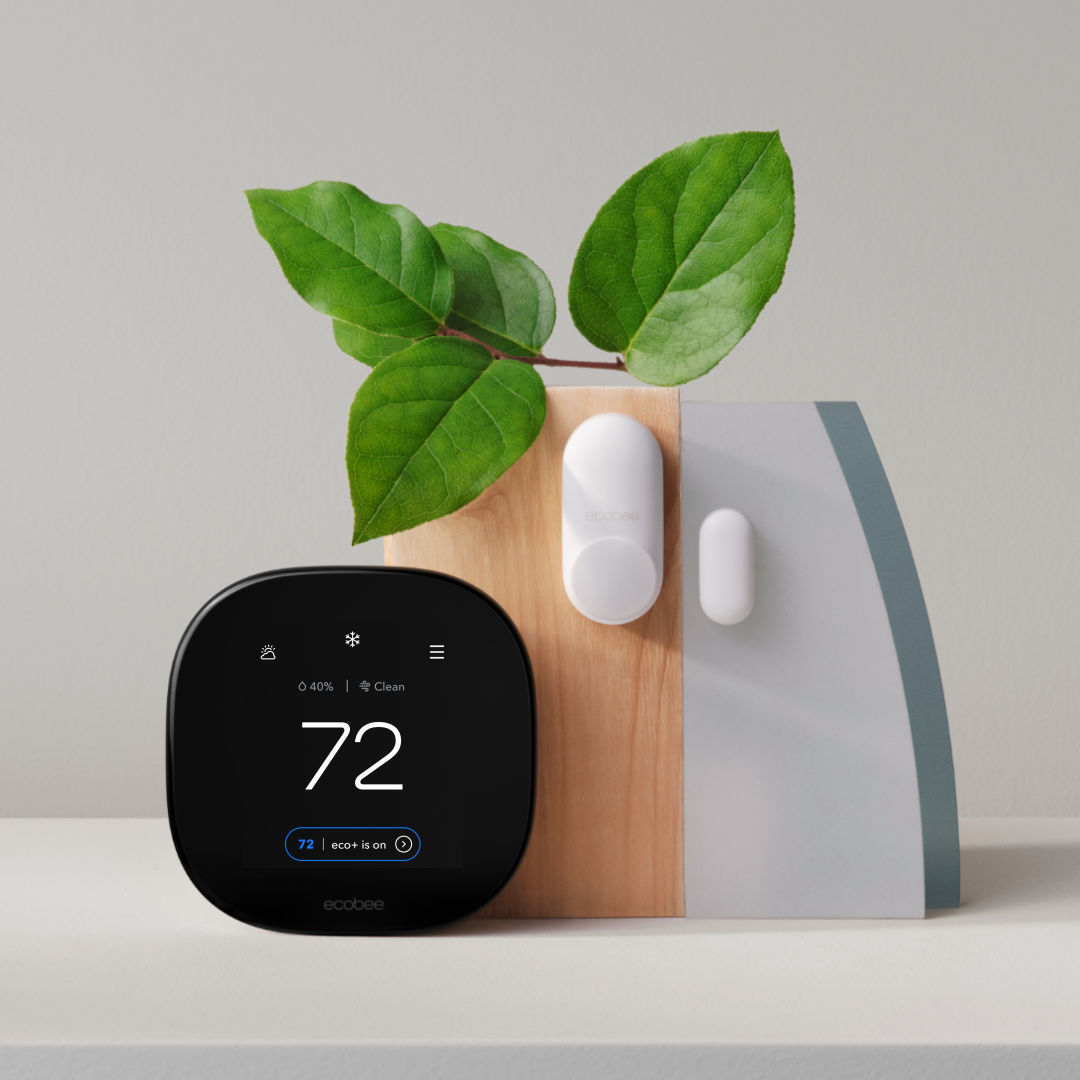Savings from your ecobee

ecobee customers in North America saved up to 26% on their heating and cooling costs, based on an internal analysis conducted in April, 2021.
Energy savings
How are energy savings calculated?
ecobee calculates energy savings by correlating how long your heating and cooling equipment run to local weather conditions. Energy savings are calculated relative to a commonly used desired temperature of 72°F (22°C).
We calculate your estimated cost savings based on your equipment’s runtime savings, the average electricity rate in your area, and the heating fuel rate for your state.
We use the same method to calculate the statistics in the Monthly Energy Report email for eco+ users. If you are an eco+ user with more than one thermostat, the percentages reported under Total Monthly Savings and Neighborhood Comparison are the averages across all your thermostats, while the Total Monthly Runtime figure is the total combined runtime of all of your thermostats.
How does changing my desired temperature (set point) affect energy savings?
As the difference between indoor and outdoor temperature increases, the rate at which a home exchanges heat with its surroundings also increases. To maintain a constant indoor temperature, your heating or cooling system has to run longer to keep up when this exchange increases. You can save energy by minimizing the difference between your indoor temperature and the outdoor temperature. This means setting a higher desired temperature during the cooling months and a lower set point during the heating months.
What are some other factors that may impact the actual energy savings I see?
Your individual energy savings will vary based on geographic location, local weather conditions, type of heating and cooling equipment, size of home, whether or not you’re in a Time-of-Use program, and your home’s energy-tightness.
Our ecobee smart thermostats are also all ENERGY STAR® certified.
Greenhouse gas (GHG) emissions savings
Why do we calculate GHG emissions savings?
Greenhouse gas emissions have a detrimental impact on climate change. As part of ecobee’s Planet Positive mission, we believe a zero-carbon future starts at home. Our thermostats help reduce emissions by making occupancy schedules easy to configure and automatically adjusting the indoor temperature to reduce energy usage when occupants aren’t home. We set back temperatures based on humidity and when grid emissions are highest. Our goal is not only to reduce energy costs, but to do so while keeping customers comfortable.
How do we measure GHG emissions?
Carbon dioxide (CO2) accounts for about 80% of all greenhouse gases in the atmosphere, so it is often used as shorthand to describe all greenhouse gases. However, there are other greenhouse gases, including methane (CH4) and nitrous oxide (N2O), that are referred to when discussing global warming and that are many times more potent than CO2. A more accurate way to refer to the impacts of all GHGs collectively (in a common unit) is to use CO2 equivalent or “CO2e”.
How are GHG emissions savings calculated?
To calculate greenhouse gas emissions avoided we extend the methodology above for calculating energy savings. This comprehensive method factors in HVAC equipment types, efficiency, and estimated equipment size to convert runtime savings for each home to energy savings.1 Runtime savings for electrical equipment are converted to kWh and while natural gas equipment runtime savings are converted to mmbtu.
Due to the geographical variations in electricity generation across North America, average annual emission rates by fuel source vary across regions. In the United States, we adopt average annual emission rates provided by the EPA across all 26 US eGrids. For Canadian provinces we rely on the Canadian National Inventory Report. We use the average emission rates for your region to convert the energy savings for your home to carbon emission reductions (CO2e).
If you still want to learn more about how we calculate savings, please contact our customer support team here.
1 This methodology, developed by our experts using industry standards, has not yet undergone independent third-party verification.